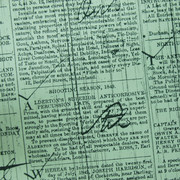- Joined
- May 6, 2014
- Messages
- 17,471
- Reaction score
- 16,541
Foley
Has a fellow Brit I must say you forgot to add one main saying such has a brace of pheasants, grouse , or partridge .
Feltwad
Sorry for going off topic, but that brought back fond memories of my first visit to the British National Agricultural and Exhibition Centre at Stoneleigh Park, Warwickshire. I had made a point to study some typical British verbiage before that first trip to the UK and whilst walking around, I spotted a gentleman with a Matched Brace of Dalmatian Dogs. I had lost a Dalmatian who was extremely dear to me a few years before and when I approached him, I said, "Oh, what a gorgeous matched brace of Dalmatians!" Of course with a Southern American accent, he realized I wasn't British. I then asked permission to pet them and he granted it. They were Aunt and Niece Females. I think he was surprised I knew the term "matched brace" and we had a most enjoyable conversation.
Thank you for sparking a very fond memory.
Gus






